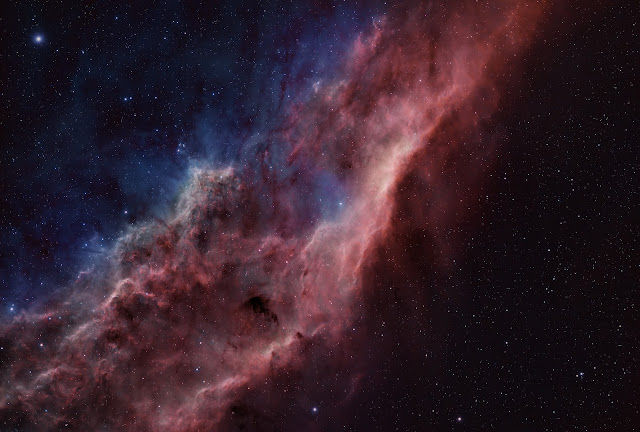Having bagged a few galaxies this week I turned my attention to the old and weary (globulars) that is....
Monday 26 March 2012
Galactic Globulars M3,M53
I cant believe the good run we have had over the last week five from five here in Sunny Norfolk. I am feeling a bit gutted too as I have missed Breckland Astronomical societies first star party & I have a week of night to do starting tonight so the skies are bound to get even better!!. I shouldn't complain either as I have addeed a handful of Pics to my own messier chart
Having bagged a few galaxies this week I turned my attention to the old and weary (globulars) that is....
Having bagged a few galaxies this week I turned my attention to the old and weary (globulars) that is....
Friday 23 March 2012
Sombrero M104
I have never imaged the Sombrero galaxy before. I was still quite low in the sky early Thurday morning I could only manage 13 Minutes before the realisation that I had work the next day. I will revisit and give a great deal more scope time on this wonderful galaxy. Anyway here is a cropped image just to say I have bagged another one. Adios Muchacho's.
M98, M99
Discovered in 1781 the M99 (centre) galaxy has a normal looking arm and an extended arm that is less tightly wound. Floating like a cloud in the blackness of space some 50 Million light years away. The upper right of the picture gives us M98 A similar looking galaxy but from our perspective it is viewed nearly edge on. A little further at 60Mly. A blue shift has been measured at 140km per second. This means this galaxy is coming our way closing in every day. Dont panic it will still take 352 Trillion 183 Billion 933 Million 935 Thousand 630 years to reach us.
This image is a composite of 2h 30m in 3 minute guides exposures at Iso 1600 Deeps sky stacker processed in Images plus 3.82 and a RC Astro Gradient xterminator applied.
This image is a composite of 2h 30m in 3 minute guides exposures at Iso 1600 Deeps sky stacker processed in Images plus 3.82 and a RC Astro Gradient xterminator applied.
M101
M101 is relatively large 70% larger in comparison to our own galaxy. Lying approx 21 Million light years away. With over 3000 HII regions the galaxy is undergoing massive star formation.
My Image Is just 36 minutes composed of 12 x 3 minute unguided exposures at Iso 1600. Time was approaching 1.00am and some light cloud was approaching. I am always amazed at how much detail is captured on such a short lenth of exposure. I cant wait to get more!
My Image Is just 36 minutes composed of 12 x 3 minute unguided exposures at Iso 1600. Time was approaching 1.00am and some light cloud was approaching. I am always amazed at how much detail is captured on such a short lenth of exposure. I cant wait to get more!
M59, M60 Galaxies
The last couple of nights have been wonderfully clear. It's a shame I have had to work too next day, I closed up both nights just after 1.00am up again for 6.00am. My first target was was a couple of fuzzies of the virgo cluster. M59 and the mamoth eliptical galaxy M60. Harbouring one of the largest black holes ever found at about 4.5 billion solar masses. My image shows M60 and NGC4647 overlapping but there is no evidence to suggest the 2 are or have interacted in the distant past. At 55 Million light years away who know whats going on today.
1hr 15 minutes at ISO1600 has revealed a wealth of detail I am pleased with. I hope to revisit and pick up a few more photons soon.
1hr 15 minutes at ISO1600 has revealed a wealth of detail I am pleased with. I hope to revisit and pick up a few more photons soon.
Saturday 10 March 2012
3rd Tail for Comet Garradd
I was looking at a Nasa pic of the day today and the wonderful image was of of the heavenly interloper Comet Garradd. The image was taken on Feb 24th http://apod.nasa.gov/apod/ap120303.html and shows a 2nd Ion tail. My image of the comet was taken on the 22nd Feb and my previous pic was a stacked image using deep sky stacker aligning on the comet and tracking the stars.I see no sign of a 3rd tail. I reprocessed stacking the comet only and allowed the stars to trail. To my amazement I could see the hint of a newly formed Ion tail. I have not seen the tail on images prior to this so I may have captured the first jets of plasma as they slam into the magnetic fields in the solar wind.
Thursday 1 March 2012
Moon & Venus
Taken on the evening of the 25th Feb The moon passes close by the planet Venus At the time this was taken the moon was 248,819 miles Venus was 87,104,049 miles away making the moon a cool 350 times closer to us than venus. I just about managed to fit them into the same frame. I deliberatly over exposed the picture to get earthshine.It is caused by sunlight that reflects off the Earth onto the Moon's night side.
Subscribe to:
Posts (Atom)
California Nebula
NGC1499 The California Nebula. Discovered in 1889 The California Nebula is an emission nebula in the constellation of Perseus, currently v...

-
Object: M45Type: Open Cluster Distance: 380Light Years (Approx) Constellation: Taurus Date : 27th October 08 Equipment: William Optics M...
-
Without doubt the finest of globular clusters visible in the northern hemisphere. Located outside the plane of our galaxy and some 25,000 li...







